#high payload capacity
Text

Tata ULTRA T11 | Light Commercial Vehicle | Tata Motors Vietnam
Discover the Tata ULTRA T11, a versatile light commercial vehicle designed to deliver superior performance and fuel efficiency. Explore its advanced features, robust build, and impressive payload capacity, making it the perfect choice for business needs in Vietnam. Learn more about Tata ULTRA T11 at Tata Motors Vietnam.
#Tata ULTRA T11#light commercial vehicle#Tata Motors Vietnam#fuel-efficient trucks#high payload capacity
0 notes
Link
The article "Convair B-58 Hustler — The Strategic Bomber Built to End the World" by Will Dabbs, MD, published in "The Armory Life," discusses the history and technical characteristics of the Convair B-58 Hustler, a Cold War-era strategic bomber designed for high-altitude, high-speed missions. Initially intended to perform a singular mission focused on nuclear delivery, the B-58 was engineered for speed and operated at Mach 2 and 70,000 feet. Despite its advanced design, including features like a delta wing and the use of four General Electric J79 engines, the aircraft faced limitations, such as vulnerability to surface-to-air missiles and challenging flight characteristics. The article details several engineering challenges, such as crew safety at high speeds, and mentions its operational history, highlighting it was never used in combat and was phased out due to the evolving nature of aerial threats. The piece emphasizes the B-58's role in America's nuclear triad and its iconic status as a technological marvel of its time.
#Convair B-58 Hustler#strategic bomber#supersonic speed#Cold War era#United States Air Force#delta wing design#nuclear deterrence#Mach 2 performance#General Electric J79 engines#defensive systems#aerodynamic advancements#operational history#reconnaissance missions#1950s military aviation#technological innovation#crew training#high-altitude flight#Soviet Union#national security#engineering challenges#air-to-air refueling#payload capacity#bomb delivery systems#mid-20th century aviation#aerospace engineering.
0 notes
Text
Is The 2019 GMC Sierra 3500HD Denali Dually 6.6L Duramax Diesel Right For You?
If you are looking for a heavy-duty truck that can handle any job, you might want to consider the 2019 GMC Sierra 3500HD Denali Dually 6.6L Duramax Diesel.
This truck is not only powerful and capable but also luxurious and comfortable.
It has a stunning exterior design, a spacious and refined interior, and a host of advanced features and technologies.
But is this truck right for you?
In this…
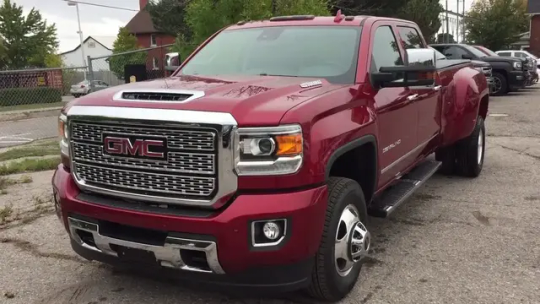
View On WordPress
#10 quarts#6.6L Duramax#advanced features#amount of oil#capable#comfortable#correct type#diesel engine#high price tag#high towing capacity#interior#loud wind noise#luxurious#oil capacity#oil change#payload capacity#poor fuel economy#powerful#premium Bose sound system#refined cabin#road noise#significant amount of oil#spacious#stunning exterior design#technologies
0 notes
Text
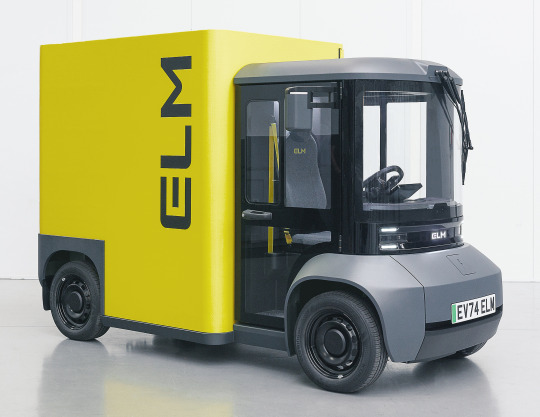


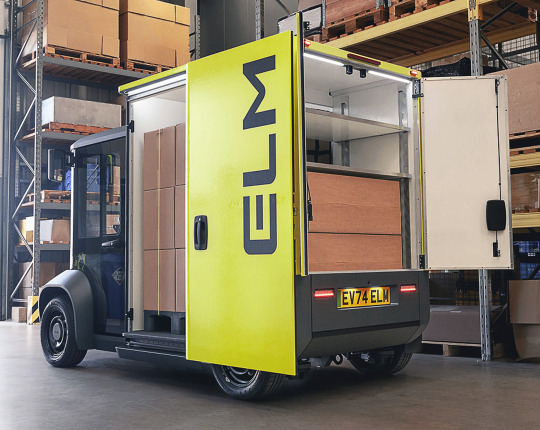

ELM Evolv demonstrator, 2024. Prodrive Advanced Technology and Astheimer Design have revealed a ‘last mile’ L7e category electric quadricycle prototype with a cubic load capacity rivalling mid-size vans. At 3,240mm long, 1,450mm wide, 2,150mm high and weighing 850kg with batteries, the compact Evolv can accommodates a 1.6m tall Euro pallet with a 300kg payload in the main load area. The secondary load area, accessible through rear ‘barn doors’, provides additional space for a 1.2m tall Euro pallet and 200kg payload. Prodrive and Astheimer has established a new company, ELM Mobility, to take the project into the production readiness phase. The vehicle, which has a 20kWh battery, will offer a 100 mile range with sales starting in 2028 at a target price of around £25,000.
ELM Mobility
#ELM#ELM Mobility#ELM Evolv#prototype#demonstrator#test vehicle#Prodrive#Prodrive Advanced Technology#Astheimer Design#2024#2028#electric quadricycle#small van#electric van#last mile delivery#micro van#box van#Evolv
144 notes
·
View notes
Text
Calling Long-Distance: 10 Stellar Moments in 2022 for Space Communications and Navigation
Just like your phone needs Wi-Fi or data services to text or call – NASA spacecraft need communication services.
Giant antennas on Earth and a fleet of satellites in space enable missions to send data and images back to our home planet and keep us in touch with our astronauts in space. Using this data, scientists and engineers can make discoveries about Earth, the solar system, and beyond. The antennas and satellites make up our space communications networks: the Near Space Network and Deep Space Network.
Check out the top ten moments from our space comm community:
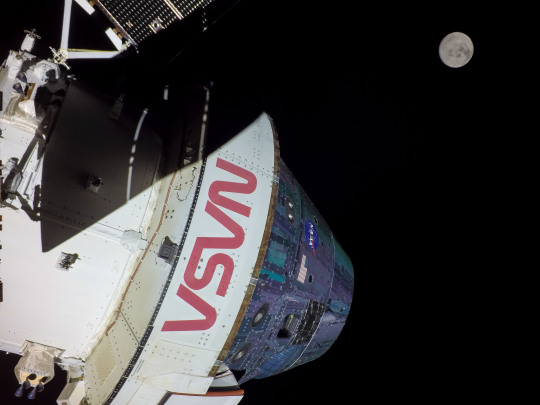
1. Space communication networks helped the Artemis I mission on its historic journey to the Moon. From the launch pad to the Moon and back, the Near Space Network and Deep Space Network worked hand-in-hand to seamlessly support Artemis I. These networks let mission controllers send commands up to the spacecraft and receive important spacecraft health data, as well as incredible images of the Moon and Earth.
The Pathfinder Technology Demonstration 3 spacecraft with hosted TeraByte InfraRed Delivery (TBIRD) payload communicating with laser links down to Earth. Credit: NASA/Ames Research Center
2. Spacecraft can range in size – from the size of a bus to the size of a cereal box. In May 2022, we launched a record-breaking communication system the size of a tissue box. TBIRD showcases the benefits of a laser communications system, which uses infrared light waves rather than radio waves to communicate more data at once. Just like we have upgraded from 3G to 4G to 5G on our phones, we are upgrading its space communications capabilities by implementing laser comms!

3. The Deep Space Network added a new 34-meter (111-foot) antenna to continue supporting science and exploration missions investigating our solar system and beyond. Deep Space Station 53 went online in February 2022 at our Madrid Deep Space Communications Complex. It is the fourth of six antennas being added to expand the network’s capacity.

4. You’ve probably seen in the news that there are a lot of companies working on space capabilities. The Near Space Network is embracing the aerospace community’s innovative work and seeking out multiple partnerships. In 2022, we met with over 300 companies in hopes of beginning new collaborative efforts and increasing savings.

5. Similar to TBIRD, we're developing laser comms for the International Space Station. The terminal will show the benefits of laser comms while using a new networking technique called High Delay/Disruption Tolerant Networking that routes data four times faster than current systems. This year, engineers tested and proved the capability in a lab.

6. In 2021, we launched the James Webb Space Telescope, a state-of-the-art observatory to take pictures of our universe. This year, the Deep Space Network received the revolutionary first images of our solar system from Webb. The telescope communicates with the network’s massive antennas at three global complexes in Canberra, Australia; Madrid, Spain; and Goldstone, California.
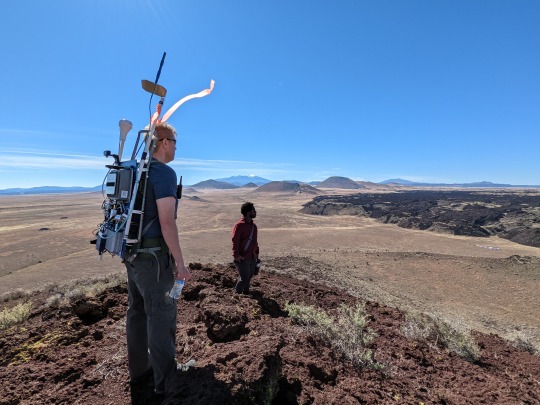
7. Just like we use data services on our phone to communicate, we'll do the same with future rovers and astronauts exploring the Moon. In 2022, the Lunar LTE Studies project, or LunarLiTES, team conducted two weeks of testing in the harsh depths of the Arizona desert, where groundbreaking 4G LTE communications data was captured in an environment similar to the lunar South Pole. We're using this information to determine the best way to use 4G and 5G networking on the Moon.
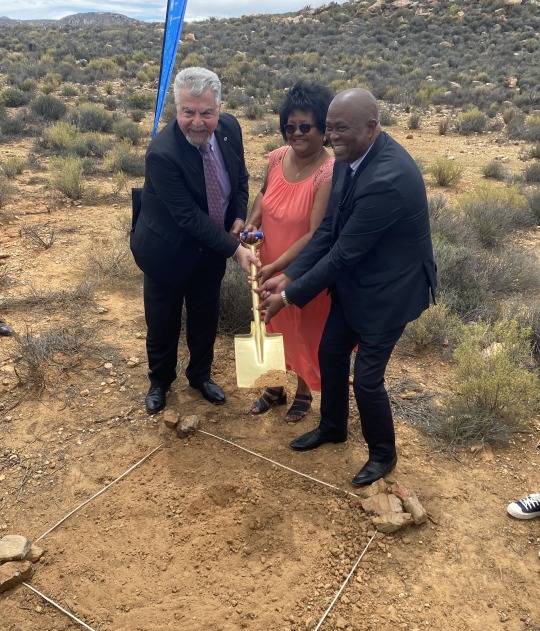
8. A new Near Space Network antenna site was unveiled in Matjiesfontein, South Africa. NASA and the South African Space Agency celebrated a ground-breaking at the site of a new comms antenna that will support future Artemis Moon missions. Three ground stations located strategically across the globe will provide direct-to-Earth communication and navigation capabilities for lunar missions.

9. Quantum science aims to better understand the world around us through the study of extremely small particles. April 14, 2022, marked the first official World Quantum Day celebration, and we participated alongside other federal agencies and the National Quantum Coordination Office. From atomic clocks to optimizing laser communications, quantum science promises to greatly improve our advances in science, exploration, and technology.

10. We intentionally crashed a spacecraft into an asteroid to test technology that could one day be used to defend Earth from asteroids. The Double Asteroid Redirection Test, or DART, mission successfully collided with the asteroid Dimorphos at a rate of 4 miles per second (6.1 kilometers per second), with real-time video enabled by the Deep Space Network. Alongside communications and navigation support, the global network also supports planetary defense by tracking near-Earth objects.
We look forward to many more special moments connecting Earth to space in the coming year.
Make sure to follow us on Tumblr for your regular dose of space!
1K notes
·
View notes
Text
Antonov An-225: The Biggest Airplane in the World

When it comes to airline airplane models, there's one that towers above the rest—quite literally. The Antonov An-225, known affectionately as "Mriya" (which means "Dream" in Ukrainian), holds the title of the biggest airplane in the world. This massive aircraft is not just a large airplane model in the figurative sense; it's the largest in every conceivable dimension.
The Antonov An-225 was originally designed in the 1980s to transport the Buran spaceplane, the Soviet Union's answer to NASA's Space Shuttle. But its capabilities far exceeded its original mission.
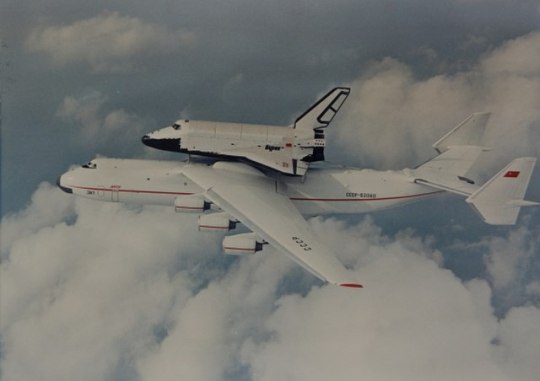
With its maiden flight in December 1988, the An-225 quickly became a symbol of Soviet engineering prowess, and later, an indispensable asset in global heavy-lift cargo transportation.
So, what makes the Antonov An-225 the biggest airplane in the world? Let’s delve into the details.
A Giant Among Giants
The sheer size of the Antonov An-225 is mind-boggling. This large airplane model has a measure of 84 meters (275 feet) in length, with wingspan size of 88.4 meters (290 feet). To put that into perspective, it's longer than an American football field and has a wingspan wider than a Boeing 747. The An-225 stands at 18.1 meters (59.3 feet) tall, nearly as tall as a six-story building.
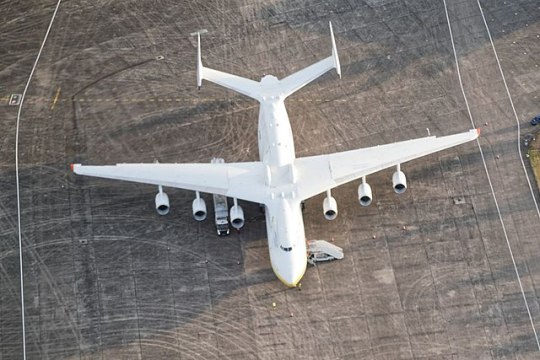
This airline airplane model is equipped with six turbofan engines, each capable of producing 51,600 pounds of thrust. These engines, combined with its enormous wings, allow the An-225 to carry a maximum takeoff weight of 640,000 kg (1,410,958 pounds). This includes the cargo it carries, which can be up to 250,000 kg (550,000 pounds). This impressive lifting capability makes it the go-to choice for transporting oversized cargo, such as wind turbine blades, military tanks, and even other aircraft.
The Unique Capabilities of the An-225
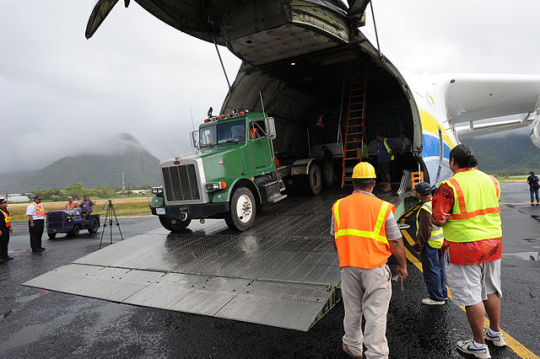
The Antonov An-225's cargo bay is so large that it could fit 50 cars. The interior is 43.32 meters (142 feet) long, 6.4 meters (21 feet) wide, and 4.4 meters (14.5 feet) high, making it spacious enough to accommodate a wide range of oversized items. Unlike many other cargo aircraft, which load through a rear cargo door, the An-225 is loaded through the nose. The aircraft's nose lifts up, allowing direct access to the cavernous interior. This feature is crucial for loading extremely large and heavy objects that cannot be easily maneuvered.
Another notable feature of this large airplane model is its 32-wheel landing gear system. This complex system allows the An-225 to land on runways that would be unsuitable for other aircraft of its size, providing flexibility in the types of airports it can access.
The An-225 also has a range of 15,400 km (9,569 miles) when carrying a smaller load, but this decreases as the payload increases. Despite this, its range and payload capacity make it ideal for long-distance heavy-lift missions, and it remains a vital tool in global logistics.
A Record-Breaking Aircraft
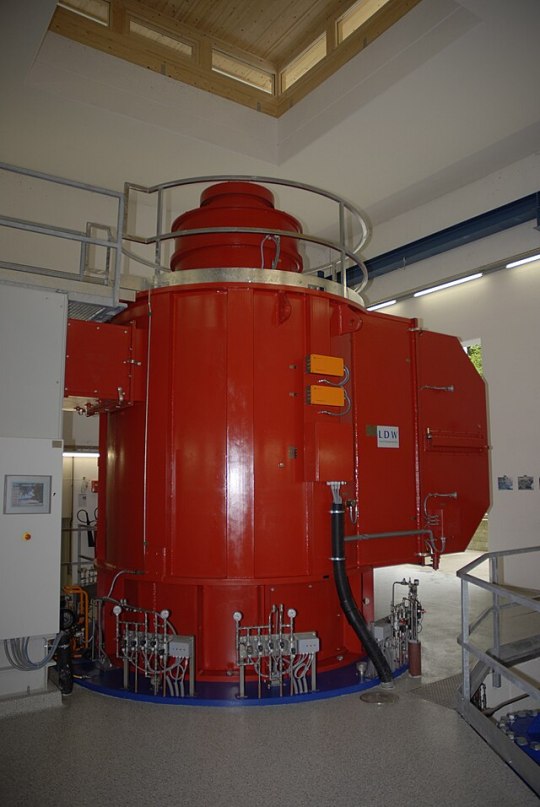
Throughout its operational life, the Antonov An-225 has set numerous world records. In 2001, it carried the heaviest single cargo item ever transported by air—a 189-ton generator for a power plant. In another instance, it transported a 130-ton piece of machinery from Germany to Kazakhstan, marking the largest payload ever carried by an aircraft.
The An-225 has also been used in humanitarian missions, delivering supplies to disaster-stricken areas around the world. Its ability to transport large quantities of aid quickly and efficiently has made it an invaluable resource in times of crisis.
The Legacy of the Antonov An-225
The Antonov An-225 is not just a marvel of engineering; it's a symbol of what human ingenuity can achieve. Despite being over three decades old, this airline airplane model remains unmatched in terms of size and lifting capacity. Its continued operation is a testament to the foresight of its designers and the enduring need for such a massive aircraft in today’s world.
However, the An-225's future is uncertain. The only existing model has been in and out of service due to the high costs of operation and maintenance. There's also been speculation about building a second An-225, but financial and logistical challenges have stalled those plans.
Despite these uncertainties, the Antonov An-225’s legacy is secure. It continues to capture the imagination of aviation enthusiasts and the general public alike, reminding us of the heights—both literal and figurative—that human technology can reach.
In conclusion, the Antonov An-225 is not just the biggest airplane in the world; it’s a symbol of human achievement. From its origins as a Soviet space transporter to its current role in global cargo transportation, this large airplane model has set records and exceeded expectations. Whether or not it continues to fly for years to come, the An-225 will always be remembered as a giant among giants in the world of aviation.
40 notes
·
View notes
Text
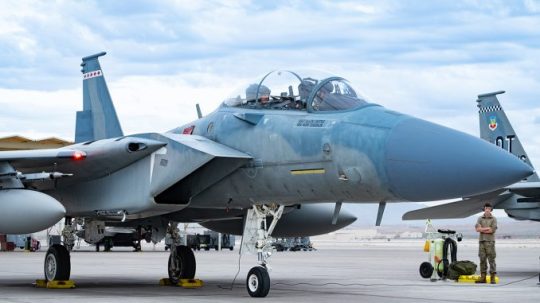
Boeing Is Evaluating The F-15EX As Successor Of The EA-18G Growler
The new “Wild Weasel” variant of the F-15EX would make use of both existing capabilities of the aircraft, as well as new ones integrated from the Growler.
Stefano D'Urso
F-15EX Growler
An F-15EX Eagle II prepares to taxi for a training mission at Nellis Air Force Base, Nevada, Nov. 15, 2023. An upgraded version of the F-15 fourth-generation fighter jet, the F-15EX boasts a new electronic warfare system and an open mission systems architecture with advanced battle management systems. (U.S. Air Force photo by Airman 1st Class Elizabeth Tan)
As the production line of the F/A-18 is about to close, Boeing is studying whether the F-15EX Eagle II can be equipped to become the successor of the EA-18G Growler. The new “Wild Weasel” variant of the F-15EX would make use of both existing capabilities of the aircraft, as well as new ones integrated from the Growler.
“We are evaluating the technical feasibility of combining EA-18G-like capabilities with the F-15EX platform,” said Rob Novotny, Boeing’s executive director for Fighters Business Development. Novotny added that the study is still in the initial stage, but the company is already eyeing opportunities both for NATO members and the Indo-Pacific.
The move is due to the planned stop to the production of the F/A-18E/F Super Hornet in 2027, which in turn means the production of the EA-18G Growler will also end. On the other hand, the production of the Advanced Eagle is expected to continue for many years and leaves the door open to a new specialized variant for Electronic Warfare (EW).
“Modern aerial combat requires command of the electromagnetic spectrum, and this platform would lead the way into the next decade or two,” Novotny said. He also pointed out that the Eagle II offers several design advantages, including the aircraft’s range, speed, computing power and payload capacity.
F-15EX Growler

An F-15EX assigned to the 85th Test and Evaluation Squadron. (U.S. Air Force photo by 2nd Lt. Mary Begy)
One could argue that a low-observable, or stealth, aircraft like the F-35 could be better suited for the job, however Novotny mentioned that stealth shouldn’t be understood strictly in terms of low-observable coatings. In fact, similarly to the Growler, such capabilities could be also replicated by using advanced EW functions.
“Stealth means, to me, I can go to a place where the enemy doesn’t want me to go, and I can operate in their environment, achieve my objective, and not be targeted,” said Novotny.
The F-15EX is already equipped with advanced EW capabilities thanks to the Eagle Passive Active Warning Survivability System (EPAWSS), but it also has the ability to carry the AGM-88 High-Speed Anti-Radiation Missiles (HARMs). In addition to these, Boeing is exploring also the possibility to integrate the AGM-88G Advanced Anti-Radiation Guided Missile-Extended Range (AARGM-ER) and the Next Generation Jammer (NGJ) pods. Still, there’s no naval variant of the Eagle II, therefore, it looks like such a successor of the EA-18G could not operate from the flight deck of an aircraft carrier unlike the Growler.
U.S. Navy EA-18G Growlers assigned to the Electronic Attack Squadron 138 (VAQ-138) fly in formation over the Pacific Ocean, June 24, 2024. The EA-18G’s vast array of sensors and weapons provides the warfighter with a lethal and survivable weapon system to counter current and emerging threats. (U.S. Air Force photo by Senior Airman Tylir Meyer)
The F-15EX and the existing EW capabilities
The new F-15EX, developed from the F-15QA that was the most advanced Eagle variant, comes from a series of needs mainly emerged after the National Defense Strategy directed the U.S. armed services to adapt to the new threats from China and Russia. The aircraft, while extremely similar to the QA variant, features some US-only capabilities like the new AN/ALQ-250 Eagle Passive Active Warning Survivability System (EPAWSS) electronic warfare and electronic surveillance system and Open Mission Systems (OMS) architecture.
The F-15EX’s systems are powered by the Advanced Display Core Processor II, reportedly the fastest mission computer ever installed on a fighter jet, and the Operational Flight Program Suite 9.1X, a customized variant of the Suite 9 used on the F-15C and F-15E, designed to ensure full interoperability of the new aircraft with the “legacy Eagles”.
The F-15EX is equipped with the AN/APG-82(V)1 Active Electronically Scanned Array (AESA) radar, developed from the APG-63(V)3 AESA radar of the F-15C and the APG-79 AESA radar of the F/A-18E/F. This radar allows the Eagle II to simultaneously detect, identify and track multiple air and surface targets at longer ranges compared to mechanical radars, facilitating persistent target observation and information sharing for a better decision-making process.
EPAWSS, an US-only system that will be retrofitted also to the F-15E, provides full-spectrum EW capabilities, including radar warning, geolocation, situational awareness, and self-protection to the F-15. Because of this, the system enables freedom of maneuver and deeper penetration into battlespaces protected by modern integrated air defense systems.
F-15EX Growler
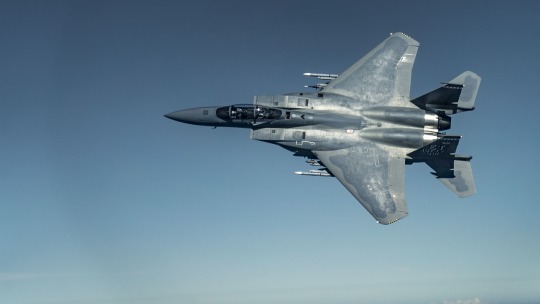
U.S. Air Force Lt. Col. Richard Turner, 40th Flight Test Squadron commander flies 40 FLTS Senior Enlisted Leader, MSgt Tristan McIntire during a test sortie in the F-15EX Eagle II over the Gulf of Mexico on Jun. 14, 2022. Assigned to the 96th Test Wing at Eglin Air Force Base, Fla., the F-15EX Eagle II is the Air Force’s newest 4th generation fighter being tested at the 40 FLTS. (U.S. Air Force photo by Tech. Sgt. John McRell)
EPAWSS is fully integrated with radar warning, geo-location and increased chaff and flare capability to detect and defeat surface and airborne threats in signal-dense and highly contested environments. The system is currently not integrated with the AN/AAR-57A(V) Common Missile Warning System (CMWS) designed to detect infrared threats, even if the F-15EX features the same mounting points used for these sensors on the F-15QA and F-15SA.
Chaff and flares capacity has been increased by 50%, with four more dispensers added in the EPAWSS fairings behind the tail fins (two for each fairing), for a total of 12 dispenser housing 360 cartridges. This improvement is important as in modern scenarios chaff and flares are often released preemptively to counter MANPADS (Man Portable Air Defense System), meaning that now the Eagle will have more countermeasures available for a better protection.
EPAWSS also integrates cognitive electronic warfare to better discriminate the signals received by the system. This capability was demonstrated during the Northern Edge 2023 large force exercise test event, which tested EPAWSS’ ability to rapidly respond to previously unencountered electromagnetic threats. The tests challenged the system’s ability to process in-mission sensor data, create exquisite techniques, and optimize waveforms in real time.
As for the kinetic capabilities, the F-15EX can carry the AGM-88 HARM on outboard wing stations 1 and 9. This capability is reportedly a product of the fly-by-wire upgrade funded by the Royal Saudi Air Force during the development of the F-15SA.

An F-15EX Eagle II from the 85th Test and Evaluation Squadron, 53rd Wing, takes flight out of Eglin Air Force Base, Florida, April 11, 2024, with U.S. Air Force Chief Master Sgt. David Wolfe, command chief of Air Combat Command, and Maj. Scott Addy, 85th Test and Evaluation Squadron, F-15 division chief. The F-15EX is the first Air Force aircraft to be tested and fielded from beginning to end, through combined developmental and operational tests. (U.S. Air Force photo by Capt. Lindsey Brewer)
The EA-18G and the capabilities it could pass to the F-15EX
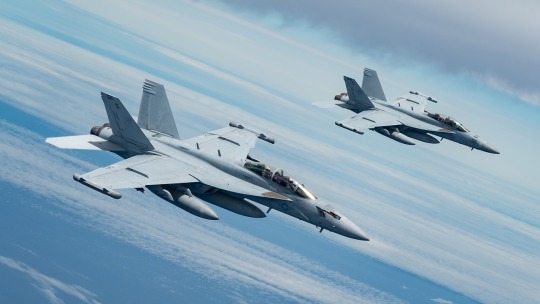
Based off of the F/A-18F, the Growler is a highly specialized Electronic Attack variant of the Super Hornet. The most noticeable difference with the baseline SH is the presence of the wingtip pods housing the ALQ-218 signals receiver suite, which helps to detect and geolocate emitters and signals.
The AN/ALQ-218 is a high performance RWR/ESM/ELINT system that allows the aircraft collect data about sources of radio frequency (RF) emissions: with this sensor, the EA-18G can “sniff” hostile radio signals to update the EOB (Electronic Order of Battle) of the combat theater where the aircraft is employed.
The EA-18G is equipped with an airborne electronic attack (AEA) avionics suite that has evolved from the EA-6B’s Improved Capability III (ICAP III) AEA system. In the future, with the Block II Growler upgrade and the NGJ (Next Generation Jamming) pods, the Growlers will also have Cyber Attack capabilities that will allow the EA-18Gs to “hack” or inject malware into enemy network.
The NGJ program aims to give the EA-18G fleet advanced airborne electronic attack capabilities through three frequency-focused increments – high-band, mid-band and low-band: in other words, the Growlers will replace the TJS pods operating in the 509 MHz to 18 GHz waveband, using three different pods, designated NGJ-LB (also known as Block/Increment 2), NGJ-MB (Capability Block/Increment 1), and NGJ-HB (Block/Increment 3) and directed specifically against the low- (100 MHz to 2 GHz waveband), mid- (2 GHz to 6 GHz), and high-band (6 GHz to 18 GHz) sections of the overall threat spectrum.
NGJ-MB is a high-capacity and power airborne electronic attack weapon system designed for the EA-18G electronic attack aircraft that was designed to carry out the usual job of denying, degrading and disrupting threat radars and communication devices, from an extended range and with enhanced ability than the previous AN/ALQ-99 tactical jamming pods, developed for the EA-6B Prowler.
The NGJ-MB, also known as the AN/ALQ-249(V)1 pod, uses directional emitters and AESA (active electronically scanned array) technology and an all-digital back end. It also has digital and software-based tech embedded in the design, which increases the ability to jam and allows for rapid beam steering and advanced jammer modulation.
While the NGJ-MB pod will “cover the majority of critical threats”, NGJ-LB will be extremely important to provide cover to stealth aircraft, threatened by the emerging counter-stealth Low Band radars, engaging enemy threats from increased stand-off distances and employing increased capacity (number of jamming assignments).
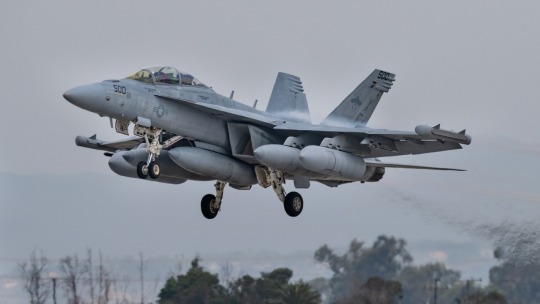
Loaded with external fuel tanks [and NGJ pods, ndr], an EA-18G Growler attached to the U.S. Navy’s Air Test and Evaluation Squadron Nine (VX-9) — the Vampires — goes airborne at Naval Base Ventura County Point Mugu in Southern California on Aug. 10, 2023, on its way to the adjacent Point Mugu Sea Range for a training exercise. The Growler is a two-seat variant of the carrier-based F/A-18 Super Hornet that is designed for electronic warfare. (U.S. Navy photo by Eric Parsons/Released)
NGJ-MB will replace one of high-band ALQ-99 pods that Growlers carry under each wing, while the NGJ-LB will replace the low-band pod that the aircraft carry on the centerline store position under the fuselage (the third one, a high-band pod, being developed as part of the so-called Increment III, will be carried on the left wing).
The Growler is also capable of carrying the HARM (High speed Anti-Radiation Missile) and AARGM (Advanced Anti-Radiation Guided Missile); these weapons are designed to seek out threat weapons systems and emitters, guiding on their energy, and destroy them. However, the EA-18G is expected to integrate also the new AARGM-ER.
The AARGM-ER is the evolution of the latest variant of the AGM-88 HARM (High-Speed Anti-Radiation Missile), the AGM-88E AARGM, a medium-range air-to-ground missile employed for Suppression and/or Destruction of Enemy Air Defenses (SEAD/DEAD). The AGM-88E is the result of a cooperative program with the Italian Air Force started in 2005 and developed as an upgrade and compliment to the AGM-88B/C. The AARGM program designed and produced a new Guidance Section and modified the existing Control Section, which are coupled with the legacy HARM Rocket Motor and Warhead Section, wings and fins.
The new Guidance Section features a passive anti-radiation homing receiver, satellite and inertial navigation system and a millimeter wave radar for terminal guidance, with the added ability to send images of the target via a satellite link before impact. The purpose of these new Guidance Section is to improve the effectiveness of the legacy HARM, especially against enemy radar and communications sites that would shut down to confuse incoming anti-radiation missiles (counter-shutdown capability) or pop-up threats.
As stated by the U.S. Navy, AARGM baseline capabilities include an expanded target set, counter-shutdown capability, advanced signals processing for improved detection and locating, geographic specificity providing aircrew the opportunity to define missile-impact zones and impact-avoidance zones, and a weapon impact-assessment broadcast capability providing for battle damage assessment cueing.
The AARGM-ER builds up on these capabilities to obtain an even more advanced weapon that is being integrated on the F/A-18E/F Super Hornet and EA-18G Growler and it is compatible for a future integration on all the variants of the F-35 Lightning II. The AARGM-ER combines the Guidance Section and Control Section of the AGM-88E with a new, larger rocket motor and a new warhead. The control surfaces have been redesigned too, obtaining aerodynamic strakes along the sides for increased lift and low-drag tail surfaces. The missile will reportedly have roughly double the range and speed of the AGM-88E.
About Stefano D'Urso
Stefano D'Urso is a freelance journalist and contributor to TheAviationist based in Lecce, Italy. A graduate in Industral Engineering he's also studying to achieve a Master Degree in Aerospace Engineering. Electronic Warfare, Loitering Munitions and OSINT techniques applied to the world of military operations and current conflicts are among his areas of expertise.
@TheAviationist.com
16 notes
·
View notes
Text
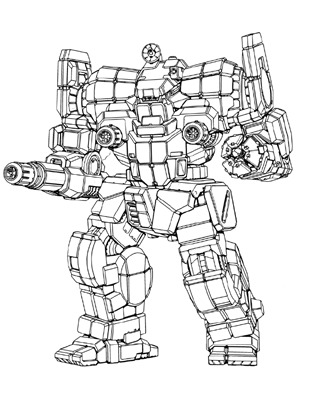
Awesome AWS-9Q (DeLacey)
Mass: 80 tons
Chassis: Technicron Type G
Power Plant: Pitban 240
Cruising Speed: 32.4 kph
Maximum Speed: 54 kph
Jump Jets: None
Jump Capacity: 0 meters
Armor: Durallex Heavy Special
Armament:
3 ER PPC (C)
1 HAG/20
Manufacturer: Lüneburg Vehicle Corporation,Irian BattleMechs Unlimited,Technicron Manufacturing
Primary Factory: Braunschweig,Irian,Savannah
Communication System: Garrett T19-G
Targeting & Tracking System: Dynatec 2780
Introduction Year: 3150
Tech Rating/Availability: F/X-X-X-E
Cost: 8,083,800 C-bills
Overview
The Awesome was designed in 2665 for the Star League by the Technicron Conglomorate and was based on the aging STR-2C Striker. While not as fast as its forefather, the Awesome is a strong assault 'Mech.
Capabilities
The Awesome's abilities are nearly entirely dependent on its particle projection cannons. The AWS can withstand a severe and consistent onslaught from its weaponry thanks to several heat sinks. With one and a half tons more armor than the Striker, the AWS is more protected than even the BattleMaster. The Amazing, like any other BattleMech, has weaknesses. While it is lethal at range, it is less effective in close-quarters combat since its PPCs have a tougher time connecting with the victim. In that case, it just possesses a light weapon and a left fist to fall back on. Because of its limited mobility, it is vulnerable to flanking attacks from speedier opponents seeking to get past the PPCs. While they face arguably of the heaviest rear armor found on any BattleMech, the Awesome's lack of rear facing armaments or a weapon mount on its left arm has offered numerous MechWarriors a fighting chance. Formations of Awesomes (or even just a few) are incredibly effective and tough to stop or defeat when correctly placed by commanders who are knowledgeable of the AWS's limitations.
Deployment
A basic upgrade to the original 8Q introduced in 3057, the heat sinks are upgraded to double heat sinks and are reduced to nineteen. The saved weight is used to add a fourth PPC to the 'Mech as well as a Guardian ECM Suite. Although there was some criticism for using basic PPCs and not upgrading to ER models, the 9Q proved itself during Operation Guerrero to be quite devastating. This clan salvage refit by Kerrie DeLacey swaps the left arm-mounted PPC for a Type 0 HAG/20 and two tons of ammunition, the other PPCs for Type DDS "Kingston" cERPPCs, and removes the small laser and ECM. To make room for the increased payload size, the heat sinks have been exchanged for their Clan equivalents.
History
Awesomes can be found in every military House. Because the Free Worlds League has the last remaining manufacturing factories capable of generating the Awesome, it also has the most Awesomes of any of the Great Houses. Opinions on the 'Mech vary greatly within the League. Many people laud its powers, while others believe that its limited mobility is too high a price to pay for what it can do. Similar sentiments exist in the other Houses, but none of them can debate the issue beyond academics. Few commanders would turn down the opportunity to acquire an Awesome for their army. The Awesome is typically used to assault a fixed position or to breach the enemy's line of defense. They are also in demand for defensive operations. MechWarriors piloting the Awesome can expect to be involved in heavy battle and to be charged with obtaining or guarding the most crucial objectives from the adversary.
Notable MechWarriors
Karrie DeLacey: A former MechTech of the Magistracy Armed Forces, Karrie fell into the mercenary life once she found that the skills she learned on the battlefield weren't as applicable in the civilian sector. After a disastrous first and only deployment with the now-extinct Dark Wolves Mercenary Company, she founded a mercenary company of her own: DeLacey's Last Resort.
Extremely proud and boastful, Karrie drew up the plans for her custom Awesome as part of an argument on the proper battlefield role such a mech should have. The design trades pure firepower and heat management for greater single-point impact and a greater ability to brawl, "like something that big ought to be able to." While unconventional, it has served her well on the battlefields of the Last Resort's ugliest deployments.
Still a proud Canopian citizen, Karrie pays each year to receive dossiers on elections back home, sending her ballot via the HPG network. While exceptions for the mandatory elections are made for citizens traveling abroad, she claims it "just wouldn't sit right not to."
Type: Awesome
Technology Base: Mixed (Standard)
Tonnage: 80
Battle Value: 2,517
Equipment Mass Internal Structure 8 Engine 240 Fusion 11.5 Walking MP: 3
Running MP: 5
Jumping MP: 0
Double Heat Sink: 19 [38] 9
Gyro: 3
Cockpit: 3
Weapons and Ammo
Hyper-Assault Gauss Rifle/20 Ammo (12) CT 2 2
ER PPC RT 2 6 3
Double Heat Sink RT 6 3
HAG/20 LA 6 10
Double Heat Sink LA 2 1
ER PPC LT 2 6 4
Double Heat Sink LT 8 4
ER PPC RA 2 6 2
Double Heat Sink RA 4 2
Features the following design quirks: Battle Fists (LA)
#battletech#here's the writeup on my custom 9Q! Definitely an older and uglier machine but I think I've put work in on the right places#And yeah yeah I know I haven't put CASE around the HAG capacitors but I don't have the equipment for a factory rebuild so I get what I get
8 notes
·
View notes
Text

Grumman Aerospace Corporation artist’s concept, a “Design 523” shuttle orbiter is depicted coming in for a powered landing at KSC, using its deployed forward-mounted air-breathing engines.
Grumman's description of the Phase A Space Shuttle design
"Design 532 is a fully reusable, two-stage space shuttle with an initial low cross-range payload of 12,800 lb. Design 532 is also designed for the high aerodynamic cross-range potential and makes provisions for phased implementation of increased payload and performance capability. This approach permits a stepwise increase in capability and growth while decoupling the technical risk and reducing initial cost. Using engines and electronics derived from existing equipment should assure an earlier first flight. Additional performance becomes available with introduction of the high-pressure orbiter engines with a payload of 22,600 lb.
The Design 532 booster is fully reusable with LOX/RP-1 propellants and five F1 engines. A deliberately conservative approach to the design of the booster minimizes technical risk and cost by avoiding development of large-scale hydrogen tankage. Development savings of several hundred million dollars per year appear possible for this orbiter-booster combination.
The Design 532 orbiter will, at first, use three J2S engines, operate at low cross range, and be fitted with first generation avionics. The baseline Design 532 orbiter is achieved by subsequent installation of the high Isp, high-pressure 250,000 lb. thrust engines. Improved thermal protection systems extend cross range, and second-generation electronics improve operational efficiency. We believe that operational experience with the orbiter will show that for certain missions the air-breathing engines are not required. Therefore, the flying qualities have been tailored to accommodate both engine weight in and engine weight out cg positions. Removal of the air-breathing engines and reduction of on-orbit propellant will increase payload capacity to orbit to 52,700 lb. As a further step to make even heavier up-payloads possible, we have made provisions for a potential non-reusable kick stage. This would raise the payload limit to 76,500 lb. In conjunction with this attention to capacity for heavy payloads, the Design 532 cargo bay has been conceived as a 'flat-bed' sized for a 10 ft. diameter payload carried internally, 15 ft. diameter carried semi-submerged, and for 22 ft. diameter carried externally.
To summarize, Design 532 is based on the following considerations:
- Reduced initial funding requirements
- Payload flexibility and growth
- Early initial flight date and initial operational capability"
Date: 1970
Mike Acs's Collection
NASA ID: S70-5601
#Preliminary Design#Phase A#Grumman Design 532#Space Shuttle#Space Shuttle Program#orbiter#Landing#concept art#1970#Kennedy Space Center#Florida#my post
32 notes
·
View notes
Text
Teumotiv IB.012 Sunshine, strategic interceptor of the World Liberation Airforce

Also known among pilots the as laser pointer (Sibirigo: рэизарущка, réizarúshka [ɾɛꜜizʌɾuꜜɕkʌ]) or foo fighter (фуфа̄ита fufâita [ɸuɸaꜜit̪ʌ]).
Made to take out strategic missiles and bombers, it carries the heaviest airborne laser of the Pacific Bloc and cruises at mach 4. A number of interceptors is kept in a state of perpetual readiness, with engines already spun up, since a slight cut in response time could save a major city or nuclear weapons battery from vaporization.
The previous IE.003 interceptor, built on an AWACS airframe, has proven too slow. Before it could come within range of incoming ballistic missiles, they would reach their functionally invulnerable reentry stage. The Acquisitory Commission of the World Liberation Army was reluctant to fund a new airframe, a fact possibly related to Ordnance officers worrying it would encroach too much on the Ordnance's nuclear defense role. Cranial engineers of the World Liberation Airforce Innovation Wing decided to convert the B.012 Everest supersonic bomber instead - the only high supercruising aircraft in service with enough payload capacity.
The bomb bay was dedicated to the laser, its power supply and cooling system, the nose radome was replaced by an optics dome, and cooling intakes were added on the dorsal side to take advantage of turbulent air from vortices. Since a conical dome would interfere too much with the laser, and a round nose would kill the aircraft's supersonic performance, a drag-reducing aerospike was installed as a compromise, already used with success on submarine-launched ballistic missiles. A second set of optics above the cockpit covers frontal angles obscured by the spike, although with lesser beam quality.
#artwork#digital art#concept art#sci fi art#scifiart#scifi#science fiction#vehicle design#sci fi vehicle#vehicle#worldbuilding art#worldbuilding#artists on tumblr#aircraft#military#Megaton Heart
58 notes
·
View notes
Text
Airbus: Soaring High in the Drone Market
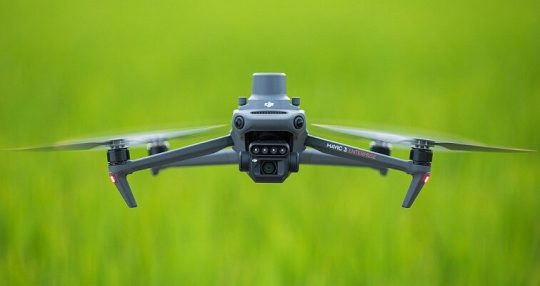
Introduction:
Airbus S.A.S., a global leader in the aerospace industry, has made significant inroads into the rapidly expanding Drone Market. Renowned for its expertise in aviation and aerospace technology, Airbus is leveraging its core competencies to redefine the landscape of drone delivery and aerial mobility.
Download FREE Sample: https://www.nextmsc.com/drone-market/request-sample
Airbus' Strategic Approach: A Holistic Ecosystem
Airbus' strategy in the drone market centers on a holistic approach that encompasses:
Core Competencies: Leveraging expertise in aerospace engineering, manufacturing, and systems integration to develop advanced drone platforms.
Urban Air Mobility (UAM): Integrating drone delivery services into a broader UAM ecosystem, encompassing passenger drones, cargo drones, and air taxis.
Infrastructure Development: Investing in the development of drone infrastructure, including charging stations, landing pads, and air traffic management systems.
Data Analytics and Optimization: Utilizing data analytics to optimize drone delivery routes, improve efficiency, and enhance customer experience.
Regulatory Engagement: Actively participating in the development of drone regulations to shape a favorable regulatory environment.
Inquire before buying: https://www.nextmsc.com/drone-market/inquire-before-buying
Airbus' Contributions to the Drone Market
Airbus' contributions to the drone market are multifaceted:
Advanced Drone Platforms: The company is developing cutting-edge drone platforms with extended range, payload capacity, and flight autonomy.
Hybrid Drone Concepts: Airbus is exploring hybrid drone designs that combine the advantages of fixed-wing and multi-rotor configurations.
Urban Air Mobility Ecosystem: The company is actively involved in developing a comprehensive UAM ecosystem, including drones, ground infrastructure, and air traffic management systems.
Integration with Existing Aviation Systems: Airbus is leveraging its expertise in aviation to seamlessly integrate drone operations into the broader airspace.
Focus on Safety and Security: The company prioritizes safety and security, incorporating advanced technologies and rigorous testing into drone development.
Airbus' Role in Shaping the Future
Airbus' strategic vision positions the company as a key player in shaping the future of the drone market. The company is likely to focus on:
Expanding Drone Capabilities: Developing drones with advanced features such as autonomous navigation, obstacle avoidance, and payload flexibility.
Global Market Expansion: Expanding drone delivery services to new markets and regions, leveraging Airbus' global presence.
Sustainability: Incorporating sustainable practices into drone operations, using eco-friendly materials and reducing noise pollution.
Public-Private Partnerships: Collaborating with governments, cities, and other stakeholders to accelerate drone adoption.
Data Monetization: Leveraging data collected from drone operations to create new revenue streams and insights.
Case Studies: Airbus' Impact
To illustrate Airbus' role in the drone market, consider the following examples:
CityAirbus: Airbus' electric vertical take-off and landing (eVTOL) aircraft concept demonstrates the company's commitment to urban air mobility and its potential application for drone delivery.
Cargo Drone Development: Airbus is actively developing cargo drones with increased payload capacity for delivering heavier packages.
Drone Infrastructure Investments: The company is investing in the development of droneports and charging stations to support the growth of drone delivery services.
Airbus' Focus on Urban Air Mobility (UAM)
Airbus sees UAM as a key growth area and is investing heavily in developing a comprehensive ecosystem. The company's vision includes:
Passenger Drones: Developing passenger drones for urban transportation, reducing traffic congestion, and improving mobility.
Cargo Drones: Integrating cargo drones into the urban logistics network for efficient delivery of goods and services.
Air Traffic Management: Developing advanced air traffic management systems for safe and efficient drone operations in urban environments.
Infrastructure Development: Building the necessary infrastructure, including vertiports and charging stations, to support UAM operations.
Challenges and Opportunities
While Airbus is a major player in the drone market, the company faces challenges such as regulatory hurdles, public acceptance, and technological limitations. However, the potential rewards are significant, including increased market share, revenue generation, and the opportunity to redefine urban transportation.
Airbus' focus on UAM and its ability to integrate drones into the broader aviation ecosystem position the company well to capitalize on the growing demand for air mobility solutions. By addressing challenges and leveraging opportunities, Airbus can solidify its leadership position in the drone market.
Conclusion
Airbus, with its deep-rooted expertise in aerospace engineering and a global presence, is poised to be a major player in the drone market. The company's focus on urban air mobility, coupled with its commitment to innovation and sustainability, positions it well for future growth.
As the drone market continues to evolve, Airbus' ability to adapt to changing market dynamics and technological advancements will be crucial for maintaining its leadership position. The company's success in developing safe, efficient, and environmentally friendly drone solutions will be essential for building public trust and expanding the adoption of drone technology.
3 notes
·
View notes
Text

So this is that "harm reduction" people keep telling me Biden is doing. They're only sending 500lb unguided high explosive bombs instead of 2000lb bombs.
... Also y'know this is fucking stupid enough but Israel can just like. Drop four 500lb bombs at once. Like there is a reason why jets have bomb racks and measure payload capacity by weight. Except those four 500lb bombs will just spread out over a wider area or increase the odds of unexploded ordinance. This is literally less than useless, and they have fully demonstrated that they would be petty enough to use the same amount of explosives regardless of individual bombload for no other reason than out of vile spite.
2 notes
·
View notes
Note
How does this description of the Men of Iron work?
Odin standing supreme among them and commanding all forces. It would assign forces to vector to a given contact area and lead Research and Development.
Sleipnir controlling all Heavy Walker and Titan units. Leading massive Siege Engines marching across the land on 4 legs and Bipedal Giants capable of moving with speed and grace nothing of their size should possess.
Geri controlling all Void Ships and Logistics Centers. Its fleet would ply the stars for resources to fuel the War Machine.
Freki controlling all Tanks and infantry. Leading a swarm of eight-legged Arachnid-Tanks and cold white-faced soldiers with spindly limbs across the land.
Finally, Huginn and Muninn to act as Testbed and Champion units meant to gather combat data and report it back to Odin to better adapt tactically and strategically. Odin had a list of special Combatants in the sector that Huginn and Muninn would engage and counter. The Majority of the list was normal. Asterion Moloc. Akenothep the Phaeron of Penance. Kaelista Hesperia of the Kabal of the Bloodied Fang. Autarch Morodin of Craftworld Kian-Ash.
Lorgar Aurelian.
Specialist Units include:
Striker: A high-tracked vehicle with the turret replaced by a bot's upper body, with weapons mounted on both arms and shoulders.
Archer: Gigantic armored motorcycle, with a railgun running down its length.
Demolisher: A very wide and flat tank that is open down the center with an embedded sonic cannon running down its length.
Avenger: Blocky tank that stabs struts into the ground and folds its treads / hover devices outward when it deploys to fire at greater velocities.
Surveyor: Large armored Sentinel with a rotating upper body mounting a large laser weapon.
Kataphractos: Six-legged spiderbot with an armed humanoid upper body.
Centurion: Resembles an Imperial Knight with blocky shapes.
Venator: Bipedal humanoid mech, with no head and no left arm, and a right arm made up entirely of an enormous gun that is nearly as long as it is tall. The rest of the upper torso is built to counterweight and dampen the recoil of this weapon.
Nemesis-class Megabot: A spider-bot with a wedge-shaped body and top-down symmetry, meaning that its top and bottom are identical and it can function perfectly fine by simply reversing its joints if flipped over. Retracts weapons and wraps its limbs around itself with right going around the underside and left going over to form a tunneling shape.
Executor-class Megatank: A gigantic quad-treaded tank that is relatively flat for its size, mounting multiple sets of multi-barrel battleship-like turrets over its treads and back. One open section on its back retracts to reveal a vertical missile-launching system.
Citadel-class Flying Fortress: A gigantic flying brick-shaped machine that, with gun turrets and missile launchers mounted on every side. Can fire nanolathing beams at the husks of downed units to bring them back into functionality.
The Men of Iron use what I call a 'killers & carriers' layout for their fleet. A bit over half their ships are offensive and the others are carriers of some variety, generally with higher capacities than yours for equivalent hull-sizes, in exchange for low firepower and toughness for ships that are higher than Imperial Extremis-Grade. Most ships have no Warp drives because of the on-site construction doctrine, allowing them to squeeze out a bit more direct combat performance. Because the resource link can't be stretched across the distances that space battles work on, the Men of Iron rely on their assault boats to reclaim matter to bring back to be fed into further construction, hence the emphasis on carriers to a degree exceeding that of almost any other faction. Against intact ships the assault boats will deliver a payload of boarders, then spend some time chopping up the hull and filling their internal space with stuff to bring back.
In general MoI ships don't look that different from Imperial, save for the lack of ornamentation and more blunt prows / slightly boxier shapes. They use plasma / particle / lance rather than solid shot, since the latter throws away too much for little gain. The Summit is very wide, while the Meridian is a super-dedicated carrier, with almost the entire thing taken up by launch bays. If you stripped out the launch bays, you'd have little left besides a nose, a reactor at the back, and the engines and spine. Ships that can construct will be able to construct faster if they enter link range, but otherwise get no benefits.
Units Huginn and Muninn function as a Testbed for a new Titan unit known simply as the Aerial Titan. A Titan with advanced Reactionless flight systems allowing it to fly in both Air and Space. Think the Gundam Phenex and Unicorn from Gundam UC. This Titan usually has a shitton of plasma and Laser weapons but also a Power Sword. But is more than capable of equipping psychic superweapon like Webway Breachers similar to the Dark Glass and Black Hole launchers like the Ones on the Speranza.
I would question the use of Norse deity names for the control units, considering the Men of Iron were made milennia into the future, but, again, whatever.
As for the units you described, they work, but also we know that they got really really weird with it too.
As to the Men of Iron ship looking like Imperial ships, I don't think they would. They were built at the pinnacle of humanity's first interstellar empire, which was a lot more Federation like than the current Imperium. So I think their ships would look more conventionally sci-fi but robotic, if that makes any sense.
5 notes
·
View notes
Text
C-5 Galaxy – The Big Daddy | PlaneHistoria
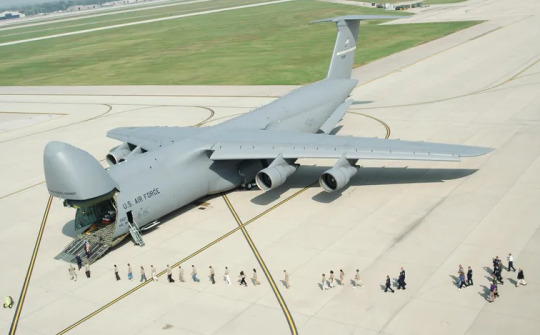
If you are looking for a large transport aircraft with military-grade capabilities, the C-5 Galaxy is giant of the skies is the largest aircraft in the US Air Force's inventory and is capable of carrying up to 270,000 pounds of cargo. The C-5 is powered by four turbo fan engines, which provide a total thrust of over 200,000 pounds, allowing it to reach a top speed of nearly 600 mph. Its size and power make it ideal for transporting large military payloads, such as helicopters, vehicles, and personnel. The C-5 Galaxy is also used for humanitarian and disaster relief operations. It's the perfect plane for getting aid to those in needs, and its massive cargo bay can quickly and efficiently move supplies to those who need them most. The C-5 Galaxy is the big daddy of transport aircraft. With its massive cargo capacity, high speed, and long range, it's sure to get the job done. Visit our website to know more information.
#military history#military#cold war#world war2#history of aircraft#aircrafts#cargo aircraft#C-5 Galaxy#educacion
19 notes
·
View notes
Note
Happy Worldbuilding Wednesday!
How do spaceships work in your setting(s)? Do they require:
a limited resource or can they run forever?
years of training to operate or watching one YT video?
a crew of people, or one pilot, or full automation?
Hi Sam, thanks for the ask!
In White Sky, most 'modern' spacecraft (i.e those manufactured around twenty years before the story's present date) large enough to carry a fusion reactor use helium-3/deuterium fusion engines. These engines are immensely efficient, and are capable of efficient interplanetary travel, but the cost and engineering complexities of building such a craft means that most privately-owned and smaller spacecraft use lightsails or traditional chemical propellants as fuel. The Dowager Caroline (the characters' main spacecraft) was built in 2039, over a half a century before the present day and before fusion power was widespread: it's powered by a trio of high-impulse hydrolox (liquid hydrogen/liquid oxygen) engines. With a maximum payload of 11 tons to the lunar surface, it can make a roundtrip between low Earth orbit and the Moon in about a week.
Piloting a spacecraft is highly regulated, and a prospective pilot or ship owner has to go through a three-year degree course to obtain a spacefaring license (five years for ELTO/national navy pilots). The degree includes things like orbital mechanics, landing sequences, deep-space flight etiquette and flight systems training. Certain ships and crews are only licensed to certain areas (for example, the Caroline is only licensed to operate in Earth-Moon space.) Obviously, smugglers and pilots fly illegally without licenses to remain unregistered on ELTO's pilot database, but that's a whole other handful of regolith :P
Crews largely depend on the role of the craft. A naval warship like the Jose Matias Delgado or an interplanetary science vessel like the Fimbulwinter will have crews of dozens, all with rigorous tasks and specialized skillsets. Smaller craft like the Caroline, or the smuggling ship Mandelbrot Sequence will have single-digit crews (the Caroline, for example, is crewed by six with a maximum capacity of eight). Single-pilot craft are usually reserved for the wealthy, as racing craft (like the racing pinnace Ananke) or as combat space fighters. Automated craft are used, similar to probes and satellites in our world. This doesn't even include off-planet space stations and habitats, with hundreds or even thousands living and working in orbit. The Caroline operates under the Prost-O'Keefe Space Systems corporation, and mostly live onboard the corporate-owned space station POS-7 between jobs.
Thanks again for the ask, and enjoy this massive brain splurge! :D
4 notes
·
View notes
Note
💃🏻➡ ;)
[ V-Day Asks ]
💃🏻➡ to ask for a dance
"Everything's going great, Jin. The place is packed. Your people are all doing their jobs. You should relax a little, while you can."
"Isn't that my line, Tse'?" Jinana smirks at the chevalier over the rim of hir drink. The bawdily-named "Hexen Lover" has proved a hit - three distinct layers of liqueurs, served with a lychee-jelly 'egg' which releases its own payload of high-proof spirits when dropped into the drink.
Tsedi is right, though. Every floor of Carapace is filled to capacity; they can only let more customers in as others leave. Jinana's fleet of highly-trained courtesans are hard at work, plying the lonely - or merely the horny - with specialty drinks and sensual treats. There will no doubt be weeks of data-collation after this.
This floor, the topmost open to patrons, is Carapace's most exclusive. Beauteous courtesans of every species stalk past wearing the sky-high footwear or other accessories that mark their role, all in elegant diaphanous silks with the signature sheen of a beetle's wing. The elevated glazium dance floor is filled with swirling lights that pulse with the beat of the music. Currently, someone's very inebriated underhusband seems to be either performing a mating dance of some sort, or acting out a battle. Other dancers edge around the large Imperiati, wary of being crushed.
Tsedi drains the last of his drink, a twinkle in his dark eyes. "What do you say we show these fools some real dancing, Jin?"
Jinana laughs, tipping hir own glass back to finish it off. S/he catches the eye of one of hir human courtesans, indicating the dance floor with a tilt of hir head. Immediately, several of them converge on the drunken Imperiati, coaxing him down from the stage and back to a booth to be petted and cooed over (and possibly anesthetized, should he prove too troublesome).
"Let's."
The other dancers make way - respectfully now, rather than in fear for the integrity of their toes - as the two step onto the stage.
Outwardly, this would seem to be a performance of high-ranking Courtesans for the entertainment of the patrons. Only the two of them know the truth - two Flowers from the same Garden, carefully cultivated to their respective roles. They move across the stage in perfect unison, laughing, with the languid grace of trained dancers... or trained killers.
There few indeed who can tell the difference.
#V-Day Mail Bag#thanks for sending in! <3 I love this Valentine's Day Saga ahaha#Tsedi Mys#Jinana Aditya#Courtesan Jinana#Knight of Heriox#the courtesan and the knight of the first flower
6 notes
·
View notes